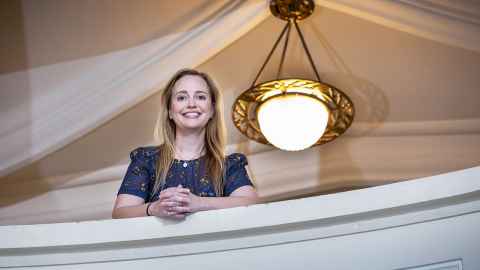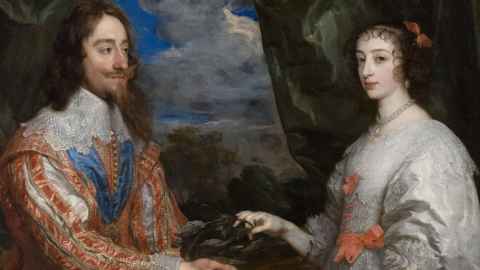Controversial royal figure inspires top fellowship
15 March 2019
Fascination with a controversial and extravagantly stylish French queen has earned art historian Erin Griffey a high honour in the academic world.

The University of Auckland's Associate Professor Erin Griffey has become a Fellow of the Society of Antiquaries of London.
The honour recognises her world-leading research on Queen Henrietta Maria of France (1609-1669), the wife of the ill-fated King Charles I and queen consort of England, Scotland and Ireland.
Dr Griffey's research has been instrumental in demonstrating Henrietta Maria's cultural and political impact on the Stuart and Bourbon courts.
An internationally known specialist in portraiture and the New Zealand curator of the touring Rembrandt Remembered exhibition, Dr Griffey says her interest in Henrietta Maria probably began at the Courtauld Institute of Art in London, where she did her PhD.
"The Institute is based at Somerset House where Henrietta Maria once had her principal palace and Catholic chapel, so I wonder if that might have been influential?" she says.
"For years I walked past Henrietta Street nearby in Covent Garden, and sat in the garden of Inigo Jones's splendid church, which had been built in her lifetime. And I found the other surviving Stuart royal buildings in London, the Queen's House at Greenwich and Banqueting House at Whitehall, fascinating."
However, she only started to do research on the Stuart court after moving from London to Auckland in 2002 and realising "what a widely influential and deeply polarising historical figure" Henrietta Maria was.
It has an esteemed history with such brilliant scholars and a strong sense of community and purpose.
"She was a strong-willed, principled, sophisticated, luxury-loving French Catholic princess who was deeply devoted to her equally divisive Protestant, English husband."
When the queen consort arrived in England at the Stuart court in 1625, she was just fifteen and had never met her husband Charles I, to whom she was married by proxy. And being both French and Catholic didn’t endear her to a suspicious English public at first.
"She made the journey from Paris with a vast entourage of servants and priests, with her trunks of diamonds and pearls, exquisitely embroidered dresses and richly decorated furniture, borne by a parade of colourfully caparisoned horses," says Dr Griffey.
"Such an entrance set the tone for her stately magnificence and exceptional taste."

Henrietta Maria eventually formed a strong bond with her husband and despite not sharing his religion, was fiercely loyal to his causes and bore him nine children, including the future kings Charles II and James II.
Independently wealthy, she became an icon of fashion and a notable and generous patron of the arts; commissioning theatre, ballet, a number of lavish portraits by leading court painter Sir Anthony van Dyck, among others, and significant court buildings and gardens.
After her husband's execution in 1649 and the subsequent civil war in England, Henrietta Maria fled in exile to Paris, eventually returning triumphantly after the restoration of the monarchy and the coronation of her son King Charles II. She died in France just before her sixtieth birthday.
Dr Griffey says she is honoured to become a Fellow of the Society of Antiquaries. "It has an esteemed history with such brilliant scholars and a strong sense of community and purpose."
She will be formally admitted to the Society during a trip to London later in the year. In accepting this honour, Dr Erin Griffey joins current University of Auckland Professors Simon Holdaway (Archaeology) and Peter Sheppard (Anthropology) who are also Fellows of the Society of Antiquaries.
Media queries
Julianne Evans | Media adviser
Tel: 09 923 6589
Mob: 027 562 5868
Email: julianne.evans@auckland.ac.nz